March 30th, 2019
Bad Case of the FOMO
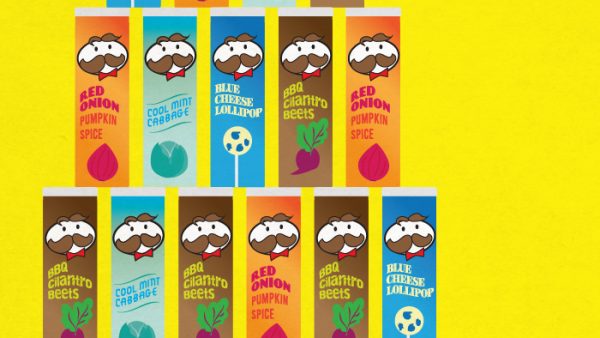
The fear of missing out – FOMO – is so widespread that you might only be reading this brief article because you can’t stand not being in the know.
On one hand, good for you – knowledge is power. On the other, you probably have a long list of must-reads, so we’ll keep it simple.
FOMO has taken over so many aspects of our lives that it has practically paralyzed us. It leads to a paradox of choice. We have so many shows cued up in our watch list on Netflix – the ones our friends insist we must see – that we end up watching none of them because we can’t decide where to begin. The more choices you have, the more you feel frozen by indecision.
In a TED talk given by psychologist Barry Schwartz, he discusses a study done by investment group Vanguard that researched about a million employees at more than 2,000 companies. It discovered that, for every 10 additional mutual funds an employer offered, the rate of participation went down two percent.
“You offer 50 funds, 10 percent fewer employees participate than if you only offer five. Why? Because with 50 funds to choose from, it’s so damn hard to decide which fund to choose, that you’ll just put it off until tomorrow. And then tomorrow, and tomorrow, and tomorrow and, of course, tomorrow never comes,” Schwartz said.
Did people watch more TV when they only had three channels? Are there too many flavors of Pringles? Does having too many entertainment options – so many places to eat, so many places to go, so many things to see – result in staying home? But how can you? Not when that hand-held digital (de)vice is screaming at you. “You can’t miss this!”
And here you are – business owner, marketing director, media manager – just trying to get people to buy your cookies. And they’re good cookies. Great ingredients, well made, delicious, and offered at a reasonable price. That’s the easy part. Now, if you can just get consumers to take a bite in this age of information overload.
You can.
And they will.
If you keep it simple.
There are lots of self-help videos, blogs and books on how to “get more done.” Try going in the opposite direction. Go against the digital deluge and do more by doing less.
Be concise and to-the-point. Keep your message simple. No one has time to go to your website to watch the “rest of the story” that you couldn’t tell in your 30-second, $5.25 million Super Bowl commercial.
Also, don’t hide your product or your message. Be dependable and trustworthy by being up front about it. Loyalty will follow.
As for that Netflix queue. Empty it. Pick one series at a time to watch and commit to it. And while you’re at it, go with the original Pringles. Simple, right?
March 30th, 2019
Embrace White Space
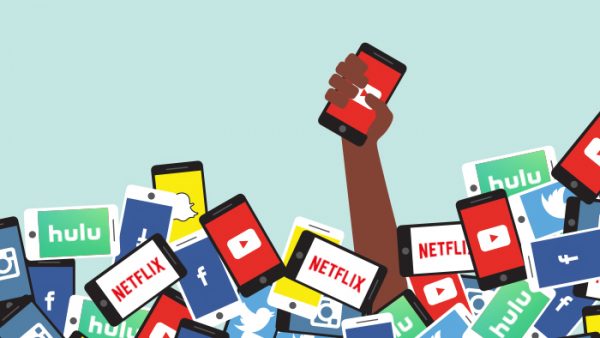
25 years ago, industry pundits told marketers their messaging was competing with about 8,000 other messages daily. That was a whole lot of clutter attacking us through billboards, radio, TV and all forms of print. We literally could not escape it.
And then came electronics, which took us from being overwhelmed to full bore suffocation. Taking the overwhelmed feeling to a whole new level is the frightening fact that we have become – as stated in a Brian Gardner article on nosidebar.com – “addicted to being busy” and he cautions that “the need for less-often results in a life of more.” We are now actively working to ensure that we’re buried in our tablets, phones and laptops.
A recent article by Jocelyn K. Glei cites researchers Mullainathan and Shafir as creating the term “time scarcity,” which they caution “diminishes our imaginative powers.” They further warn that we are “preoccupied by time scarcity.” Does that sound familiar? Are you proud of being “booked solid” or “slammed?” In a chilling pronouncement, Glei notes that “time scarcity is like kryptonite for creativity.”
We clearly have a problem – even an addiction. Glei and Gardner, along with noted business consultant Lori Stohs of Lori Stohs Consulting Group, believe that white space is our path out of this largely self-imposed prison cell. Self-regulated white space may be our only hope of escaping our time scarcity addiction to reach our “life of more.”
First, we need to understand “white space.” In her article, Glei defines “work” and “life” whitespace as an extension of “design” white space. As stated by Glei, in design “white space” is negative space. It’s not blank because it has a purpose. It is balancing the rest of the design by throwing what is on the page into relief. The white space helps focus your visual attention. Glei goes on to suggest that you “analyze your schedule with an eye toward design.” Have you preserved enough “white space” within your daily workflow? Or does your day look extremely busy and cluttered? This also holds true for your daily life-flow. Knowing what to do is the first step. Next you have to make a deliberate effort to find your “white space.” And this won’t be any easier than expelling your other addictions.
A recent article on Intentionally Designed offers some simple tips for incorporating white space into your life:
- Learn to say no.
- Be more productive and less busy.
- Schedule time for something you enjoy.
- Give yourself grace periods.
- Don’t feel guilty about taking a break.
- Live intentionally (i.e., run your electronics, don’t let them run you).
This list is just the beginning of the steps that can lead you away from time scarcity and into an existence balanced by white space.
If you are able to make that transition successfully, Gardner promises a life that is no longer stunted, that observes what was formerly missed and that embraces authenticity by allowing vulnerability.
We partake in a lot of wellness challenges in our office, I’m going to suggest that our next challenge be a white space marathon.
January 28th, 2019
Sweepstake Rules Baking Survey
NO PURCHASE IS NECESSARY TO ENTER OR WIN. A PURCHASE WILL NOT INCREASE YOUR CHANCES OF WINNING. ALL FEDERAL, STATE, LOCAL, AND MUNICIPAL LAWS AND REGULATIONS APPLY. VOID WHERE PROHIBITED.
- Eligibility
This Research Study (the “Sweepstakes”) is open to legal residents of the fifty (50) United States and the District of Columbia who are at least eighteen (18) years old at the time of entry. Employees of Bozell Research and other companies associated with the promotion of the Sweepstakes, and their respective parents, subsidiaries, affiliates and advertising and promotion agencies as well as the immediate family (spouse, parents, siblings, and children) and household members of each such employee are not eligible. The Sweepstakes is subject to federal, state, and local laws and regulations.
- Sponsor
The Sweepstakes is sponsored by Bozell Research, located at 1022 Leavenworth, Omaha, Nebraska 68102.
- Agreement to Official Rules
Participation in the Sweepstakes constitutes entrant’s full and unconditional agreement to and acceptance of these Official Rules and the decisions of the Sponsor, which are final and binding. Winning a prize is contingent upon being compliant with these Official Rules and fulfilling all other requirements set forth herein.
- Sweepstakes Period
The Sweepstakes begins on January 28, 2019 at 12:00pm Central Time and ends on February 26, 2019 at 11:59PM Central Time (the “Sweepstakes Period”). Entries that are submitted before or after the Sweepstakes Period will be disqualified. Submissions will be accepted for the duration of the Sweepstakes using any of the following methods:
Online
- How to Enter
Online: This method of entry will be available by visiting our website either via this survey – enter at the end of the survey or by emailing: kmickelsen@bozell.com with name and email address as an alternate form of entry if you choose not to take the survey.
Limit one (1) entry per person, per email address, and per household for the duration of the Sweepstakes Period, regardless of method of entry. Entries received from any person, e-mail address, or household in excess of the stated limitation will be void. All entries become the property of Sponsor and will not be acknowledged or returned.
- Prize Drawing
On or about February 26, 2019, the Sponsor will select potential winners in a random drawing from among all eligible entries received. The odds of being selected depend on the number of entries received. The Sponsor will attempt to notify the potential winner via telephone or email on or about February 28, 2019. If the potential winner cannot be contacted within five (5) days after the date of the first attempt to contact him/her, the Sponsor may select an alternate potential winner in his/her place at random from the remaining non-winning, eligible entries.
- Winner Notification
The potential winner will be notified by email, mail or phone. Each winner will be required to complete, electronically sign and submit a Declaration of Compliance within five (5) days of the date notice or attempted notice is sent, in order to claim his/her prize. If a potential winner cannot be contacted, or fails to submit the Declaration of Compliance within the required time period (if applicable), or prize is returned as undeliverable, potential winner forfeits prize. If the potential winner is at least 18 but still considered a minor in his/her jurisdiction of residence, Sponsor reserves the right to award the prize in the name of his/her parent or legal guardian, who will be required to sign the Declaration of Compliance on the potential winners behalf and fulfill any other requirements imposed on winner set forth herein. Potential winners must continue to comply with all terms and conditions of these Official Rules, and winning is contingent upon fulfilling all requirements. In the event that a potential winner is disqualified for any reason, Sponsor will award the applicable prize to an alternate winner by random drawing from among all remaining eligible entries. Only three (3) alternate drawings will be held, after which the prize will remain un-awarded. Prizes will be fulfilled approximately 8-10 weeks after the conclusion of the Sweepstakes.
- Prizes
$100 Amazon Gift Card, Q=3
- General Conditions
In the event that the operation, security, or administration of the Sweepstakes is impaired in any way for any reason, including, but not limited to fraud, virus, bug, worm, unauthorized human intervention or other technical problem, or in the event the Sweepstakes is unable to run as planned for any other reason, as determined by Sponsor in its sole discretion, the Sponsor may, in its sole discretion, either (a) suspend the Sweepstakes to address the impairment and then resume the Sweepstakes in a manner that best conforms to the spirit of these Official Rules or (b) terminate the Sweepstakes and, in the event of termination, award the prize at random from among the eligible, non-suspect entries received up to the time of the impairment. The Sponsor reserves the right in its sole discretion to disqualify any individual it finds to be tampering with the entry process or the operation of the Sweepstakes or to be acting in violation of these Official Rules or in an unsportsmanlike or disruptive manner. Any attempt by any person to damage the website or undermine the legitimate operation of the Sweepstakes may be a violation of criminal and civil law, and, should such an attempt be made, the Sponsor reserves the right to seek damages (including attorney’s fees) and any other remedies from any such person to the fullest extent permitted by law. Failure by the Sponsor to enforce any provision of these Official Rules shall not constitute a waiver of that provision.
- Release and Limitations of Liability
By participating in the Sweepstakes, entrants agree to release and hold harmless the Sponsor, and each of their respective parents, subsidiaries, affiliates, advertising and promotion agencies, other companies associated with the Sweepstakes, and each of their respective officers, directors, employees, shareholders, representatives, and agents (the “Released Parties)” from and against any claim or cause of action arising out of participation in the Sweepstakes or receipt or use of the prize (including any travel or activity related thereto), including, but not limited to: (a) any technical errors associated with the Sweepstakes, including lost, interrupted or unavailable Internet Service Provider (ISP), network, server, wireless service provider, or other connections, availability or accessibility or miscommunications or failed computer, satellite, telephone, cellular tower or cable transmissions, lines, or technical failure or jumbled, scrambled, delayed, or misdirected transmissions or computer hardware or software malfunctions, failures or difficulties; (b) unauthorized human intervention in the Sweepstakes; (c) mechanical, network, electronic, computer, human, printing or typographical errors; (d)application downloads, (e) any other errors or problems in connection with the Sweepstakes, including, without limitation, errors that may occur in the administration of the Sweepstakes, the announcement of the winner, the cancellation or postponement of the event and/or the flyover, if applicable, the incorrect downloading of the application, the processing of entries application downloads or in any Sweepstakes-related materials; or (f) injury, death, losses or damages of any kind, to persons or property which may be caused, directly or indirectly, in whole or in part, from entrants participation in the Sweepstakes or acceptance, receipt or misuse of the prize (including any travel or activity related thereto). Entrant further agrees that in any cause of action, the Released Parties liability will be limited to the cost of entering and participating in the Sweepstakes, and in no event shall the entrant be entitled to receive attorney’s fees. Released Parties are also not responsible for any incorrect or inaccurate information, whether caused by site users, tampering, hacking, or by any equipment or programming associated with or utilized in the Sweepstakes. Entrant waives the right to claim any damages whatsoever, including, but not limited to, punitive, consequential, direct, or indirect damages.
- Disputes
Except where prohibited, each entrant agrees that any and all disputes, claims and causes of action arising out of, or connected with, the Sweepstakes or any prize awarded shall be resolved individually, without resort to any form of class action, and exclusively by the appropriate court located in Nebraska. All issues and questions concerning the construction, validity, interpretation and enforceability of these Official Rules, entrants rights and obligations, or the rights and obligations of the Sponsor in connection with the Sweepstakes, shall be governed by, and construed in accordance with, the laws of Nebraska, without giving effect to any choice of law or conflict of law rules, which would cause the application of the laws of any jurisdiction other than Nebraska.
- Privacy
Information collected from entrants is subject to Sponsor’s privacy policy.
- Winner List
To request the name of the winner send a self-addressed, stamped envelope to Bozell Research, Attention Kim Mickelsen, 1022 Leavenworth Street, Omaha, NE 68102. Winner List requests will only be accepted after the promotion end date (listed above). For the Winner List, you can also send an email to kmickelsen@bozell.com.
January 24th, 2019
Privacy
Bozell Privacy Policy
This privacy policy discloses the privacy practices for Bozell.com. This privacy policy applies solely to information collected by this web site.
It will notify you of the following:
- What personally identifiable information is collected from you through the web site, how it is used and with whom it may be shared.
- What choices are available to you regarding the use of your data.
- The security procedures in place to protect the misuse of your information.
- How you can correct any inaccuracies in the information.
Information Collection, Use, and Sharing
We are the sole owners of the information collected on this site. We only have access to/collect information that you voluntarily give us via email or other direct contact from you. We will not sell or rent this information to anyone.
We will use your information to respond to you, regarding the reason you contacted us. We will not share your information with any third party outside of our organization, other than as necessary to fulfill your request, e.g. to ship an order.
Unless you ask us not to, we may contact you via email in the future to tell you about specials, new products or services, or changes to this privacy policy.
Your Access to and Control Over Information
You may opt out of any future contacts from us at any time. You can do the following at any time by contacting us via the email address or phone number given on our website:
- See what data we have about you, if any.
- Change/correct any data we have about you.
- Have us delete any data we have about you.
- Express any concern you have about our use of your data.
Security
We take precautions to protect your information. When you submit sensitive information via the website, your information is protected both online and offline.
Wherever we collect sensitive information (such as credit card data), that information is encrypted and transmitted to us in a secure way. You can verify this by looking for a closed lock icon at the bottom of your web browser, or looking for “https” at the beginning of the address of the web page.
While we use encryption to protect sensitive information transmitted online, we also protect your information offline. Only employees who need the information to perform a specific job (for example, billing or customer service) are granted access to personally identifiable information. The computers/servers in which we store personally identifiable information are kept in a secure environment.
Updates
Our Privacy Policy may change from time to time and all updates will be posted on this page.
If you feel that we are not abiding by this privacy policy, you should contact us immediately via telephone at 402.965.4300 or via email at info@bozell.com.
January 9th, 2019
Brave New World of Marketing
It seems like everyone has hopped on the cause-and-affinity-marketing train this past year. The transparency of social media has pretty much forced it to happen if a company wants to create, gain or retain brand loyalty. But there are a lot of things that can go wrong when you quickly and (almost) blindly jump into these types of partnerships. So take a breath. Think about what makes the most sense. Be genuine. Be mindful. And above all, read this issue of Thinking as we walk you through some of the musts, the don’ts and the in-betweens.
January 9th, 2019
A Purpose Without Purpose is Pointless
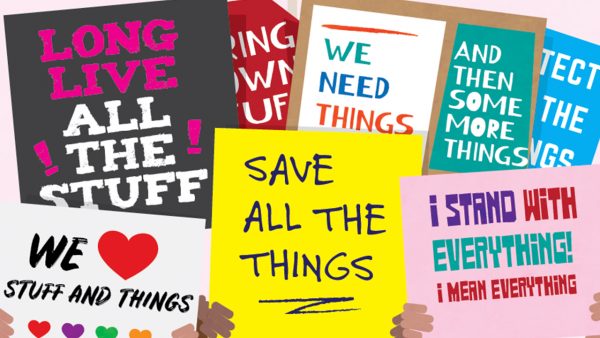
There has been a lot of noise lately about so-called purpose-driven branding.
For example, “nearly two-thirds of millennials and Gen Z express a preference for brands that have a point of view and stand for something.” 1
And for an even bolder statement: “people are willing to pay more to remain true to their values.” 2
I wouldn’t be so sure.
Don’t get me wrong. Plenty of people switched from Uber to Lyft in the wake of their scandals; VW’s emissions evasion fraud made some rethink their new car; and Papa John’s suffered tanking pizza sales after their CEO made a general racist a-hole
of himself.
People vote with their dollars, it’s true. But choosing not to patronize a brand because of their bad behavior is a vastly different prospect than paying more for a product because the brand has a stated “higher purpose.”
Does this mean that brands shouldn’t align themselves with a purpose? Not at all. It means do it for the right reasons.
- Find a purpose that truly aligns with your brands’ mission to avoid being outed as inauthentic.
- Don’t expect a sales jump because of it.
Advertising has a great power to impact change in our world. Do it because it’s the right thing to do.
January 9th, 2019
The Year of the Apology Tour

A complete recommitment to you.”
That’s going to change.”
Moving forward, it’s time to move in a new direction.”
Three things said in three not-so-different commercials for three of America’s most prominent brands: Wells Fargo, Facebook and Uber. 2018 has indeed turned into the year of the apology tour. A year in which brands ask for forgiveness as they face round after round of negative publicity, boycotts and even congressional hearings.
How did we get here?
Well, according to the Harvard Business Review and data firm Label Insight, consumers cite shared values (64 percent) and transparency (94 percent) as major factors when it comes to determining with which brands they want to build a relationship. Should these factors erode, brands are left with fewer ways to compete and little in the way of differentiation.
In 2018, brands are being held to higher expectations than ever before. Why? Because we as consumers have choices. Don’t like Uber? Try Lyft. Not a fan of Wells Fargo? There are plenty of other banks out there (might we suggest First National Bank? 😊). Gone are the days when we just grin and bear it because we have no other options. And companies know that. That’s why they’re spending upwards of $500 million on high-impression campaigns aimed at regaining trust and reshaping the narrative. Frustrated with Facebook? Well, that’s a different story. But, you could always delete your account.
Will they be successful?
On YouTube, all three ads suffered from a considerable amount of “dislikes.” All three brands were forced to disable comments on their videos. And all three have served as fodder for countless parodies.
How can brands prevent this?
Advertising can only do so much after the fact. You can’t promote a value or a mission that doesn’t actually exist. So, always place your customers’ needs first. Don’t try to be something that you’re not. And do what’s right from the get go. You won’t have to reestablish yourself if you never lose your way in the first place.
January 9th, 2019
A Partnership Paved with Pizza and Books
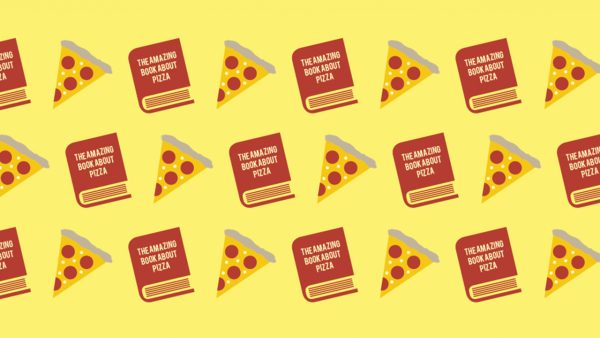
Can you imagine if you sat down to watch WWE and you heard the announcer say, “This match is brought to you by The Gap – give love; give gap”? Not gonna happen, right? And why is that? Because a partnership between a fun, friendly clothing store and a knock-down, drag-out professional wrestling organization doesn’t make sense. Crisp khakis and bright golf shirts don’t mix well with pro wrestling!
Marketing partnerships are built on affinity: that mutual respect between a company and an organization that’s built on shared interest and beliefs. Some of them are obvious: a restaurant and a food bank. But some of them – and often the best of them – are subtler.
If you were a child or parent in the 80s, you’re probably aware of Pizza Hut’s Book It! program. The partnership encouraged children to read more by incentivizing them with pizza: read a prescribed number of books, get a free personal pan pizza.
This partnership was a success. Pizza Hut wanted to boost its image among families. BOOK IT! wanted kids to read more. Both achieved their goals on a massive scale, thanks to Pizza Huts’ popularity. And ultimately, the consumer won, too, because children read more and got a free dinner.
Affinity marketing is all about getting consumers to feel good about your brand, so it’s best when the brand and its partner feel just as good about each other. Consumers will see it and feel it.
Another example is Allstate Insurance and college football. You’ve probably seen the Allstate hands printed on dozens of field goal nets across the country. For every field goal kicked into one of these nets, Allstate makes a donation to the particular school’s scholarship fund. Through this program, they’ve contributed millions to collegiate scholarships since 2005.
This partnership works really well because the supplier (Allstate) gains a reputation as a company that is caring and genuine, and the affinity group (colleges) benefit from the financial contributions toward scholarships. It’s mutually beneficial for both parties, and it’s a win for the consumer.
So what’s the moral of this story?
Find a partnership that fits.
No matter what, above everything else, there has to be a connection. If you’re the supplier, your brand needs to borrow something from the affinity group that you couldn’t buy. And if you’re the affinity group, you need to get something out
of it, too.
And don’t underestimate the power of passion. I’d be willing to bet the people who came up with the marketing idea of BOOK IT! had a kid who wouldn’t read books … but loved pizza.
January 9th, 2019
Quit Asking Your Audience to Save the World

Researchers have identified three common reactions to stress: fight, flight or freeze. (Freeze was only recently added.) And without meaning to, much of cause marketing is triggering these responses daily.
It’s unintentional, usually. An injustice is happening or there’s a major issue that needs attention, and we and our clients want people to act. Problem is, we’re paralyzing them with shocking statistics, disturbing images and issues that seem beyond anyone’s control.
To be fair, a consumer might act if their stress response tends to be fight. But that leaves two thirds of an audience fleeing or freezing. So, how do we talk about causes in a way that connects rather than stresses? Our best recommendation is to put into practice what we learned while working with Omaha’s Henry Doorly Zoo & Aquarium.
- Break down a big problem into small, actionable steps. Think: what impact can one individual realistically have?
- Lead messaging with what an individual can do, not with the problem.
- Pick an initiative that is relevant and meaningful to your brand.
Why or how did we arrive at these takeaways? Let’s explore each in detail.
- When we first began working with Omaha’s Henry Doorly Zoo & Aquarium, we learned 18.7 million acres of forest are lost every year – that’s 27 soccer fields every minute, according to the World Wildlife Organization. A daunting problem to say the least. We realized, however, that if we chiseled the big problem down to small, actionable steps, it became more accessible. No single human can replant all 18.7 million acres, but one single human can contribute to conservation by becoming a member of the Omaha’s Henry Doorly Zoo & Aquarium, as a portion of every membership goes toward conversation. So, what was a big problem (18.7 acres of forest lost every year) was broken down into an approachable solution (buying a membership).
- When messaging leads with a problem rather than solution – especially when it’s as daunting as 18.7 million acres of forest being lost every year – the audience is often left feeling helpless, angry or numb. This is why it is so important to do what we call “flipping the script.” Basically, tell people what they can do before you share how big the problem actually is. Put the control back in the audience’s hands. Explain why it’s a worthwhile endeavor and minimize the stress response.
- At best, randomly picking an initiative to support feels disconnected. At worst, it feels slimy and disingenuous. So be sure you’re choosing a cause that has a relevant connection to your brand and audience. For example, if you’re in the automotive business, how could you use your product and expertise to benefit others? Perhaps you start a program that offers rides to work for struggling individuals. Or you could donate a portion of your income to sustainable energy research. Simple, and definitely not slimy.
After implementing all that’s above, follow through on your efforts. See if you’re actually making a difference. If you are, tell people about it. If you’re not, take time to reevaluate and try again. Because we believe when it comes to cause marketing, the goal should simply be to make it better. Sure, your team can pursue perfection, but moving the needle slowly and steadily is just as much of an accomplishment. Remember, cause marketing is ultimately about empowering your audience. And, together, doing good.
January 9th, 2019
Taking a Brand Stand
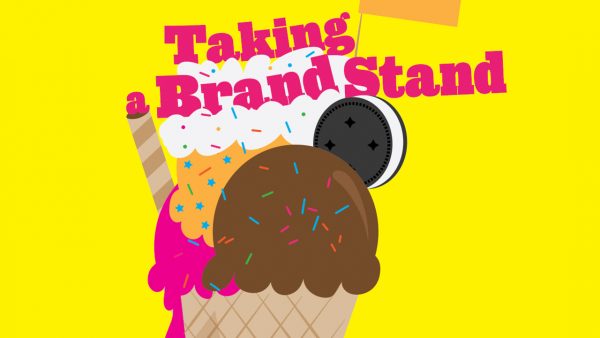
The last thing any business leader wants to do is alienate a potential customer. But the days of companies being able to safely sit on the sidelines of the big social issues are over. Silence can be viewed as being complicit. And it gives others the upper hand in controlling the narrative.
Efforts like Ben & Jerry’s Save Our World political activism and Nike’s support of Colin Kaepernick get massive media coverage. But every day, in small towns and big cities, companies large and small are being asked by consumers to explain what they stand for and where they stand on key issues.
According to a recent study by the Shelton Group, 86 percent of consumers believe companies should take a stand on social issues. In a study from Sprout Social, 57 percent of consumers are more likely to buy from or boycott a brand because of its stance on a social or political issue. And for these “belief-driven buyers,” silence is not an option. Edelman’s 2017 study, “Beyond No Brand’s Land,” found that 51 percent of respondents believe that brands have more power to solve social issues than the government.
And lest you think it’s just millennials: 62 percent of consumers 55 and older also say it’s at least somewhat important to hear from brands about social and political issues.
But this isn’t something done lightly. It must be authentic. It should lie at the intersection of your brand’s value proposition and your customers’ passion points. And you need to understand the repercussions. By taking a stand, you may make some people unhappy. But the fact is, today, brands have more to lose in silence than in speaking out.


